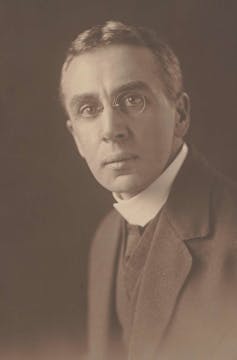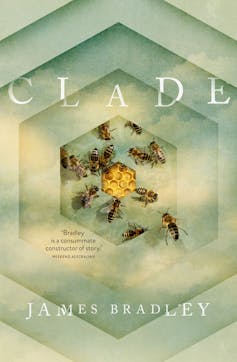 |
| West African fabrics and design offer a more sustainable way to produce fashion |
Every few weeks global fast fashion brands mass produce their latest clothing, pumping out garments to be sold around the world. There is growing criticism that it’s socially irresponsible to produce such large volumes of clothes so often. It leads to surplus and waste that takes a toll on the environment. And by requiring new styles so often it also stifles designers’ creativity in an industry that thrives on it.
Sustainable fashion means clothes being produced and consumed in ways that are socially responsible. But the conversation about sustainable fashion has centered mainly on the western and Asian fashion industries. Africa is discussed only as the dumping ground for the tonnes of disposable and secondhand clothes produced by fast fashion brands. My study bridges this gap by showing how fashion designers in west Africa produce their work.
Prèt-a-porter (ready-to-wear) clothing is mass produced by fashion houses – as opposed to couture that is made to measure. West African fashion designers produce what I have termed customised prèt-a-porter – a limited-edition ready-to-wear model that creates the latest fashions in measured volumes.
This is a model for sustainable fashion that allows more space for creativity and innovation and also uses environmentally friendly laundry measures to ensure the long lifespan of clothes.
Customised ready-to-wear fashion
Fashion from Africa has attained global recognition thanks to the creativity of today’s designers. However, very little is known about how the production strategy they use contributes to sustainable fashion.
Designers in Africa are likely to face economic, social, and political challenges that limit production and efficiency in the industry. However, many of the designers in my west African study turned these challenges on their head: while the market limits the possibilities of scaling up production, it in effect endorses innovative sustainable fashion practices.
But west Africa’s contribution to sustainable fashion is not just shaped by what the market won’t allow. As I find in my study, designers are also guided by the socio-cultural milieu of the fashion consumption in the cities where they live. Designers tap into this culture and grow it.
I found that the factors that shape fashion consumption in west Africa include the need to produce clothes that assert social and economic status (exclusivity), the ability to make designs that are not easily replicated (uniqueness), and the creativity to project the personality of each client in the clothes (individuality). While these needs can easily be met through bespoke production, applying them to the kind of ready-to-wear mass production done by fast fashion brands in the west is challenging. Not so with west Africa’s customised prèt-a-porter fashion model.
West African designers offer a much wider variety of creative designs compared to the homogenised designs of fast fashion brands. Most release collections only twice a year – summer and winter – instead of every two weeks like western fast fashion brands. By producing collections less often, west African designers can invest time in creating innovative designs.
Exclusivity, uniqueness and individuality
To achieve exclusivity yet remain affordable, many west African designers use cheaper machine-produced African wax print fabrics but design them flamboyantly to attain a high-end fashion standard. Or some might combine socially valued cloths with less socially valued ones. For example, wax print is combined with exclusive fabrics like the handwoven cloths aso oke and kente or with lace and other imported fabrics.
Making unique designs often requires a little tweaking of popular styles – like offering different sleeve styles and necklines, or using appliques and accessories. Laurie, a participant of the study explains that in stocking different shops across the world with her collection, “I give you at least three sizes … and then maybe two [styles] each”. Thus, in one store, she might stock two pieces of one design across the four sizes she produces, producing eight variations of one design. Of the 40 or 50 pieces she offers a store she’s featuring five or six unique designs.
Most designers emphasised the need to project personality through their pieces. Some do this by catering to a particular target market – like corporate women, businessmen and religious leaders. A Ghanaian designer like Naa projects her personality through her clothes by making something “Naa would like to wear”. Before she produces a collection, she makes a few pieces for herself within the prevailing trend in order to test the market. The styles that receive the most compliments become her collection.
Longer lasting and sustainable
By considering the consumer’s socio-cultural needs in the production process, designers produce more personalised pieces. These create an emotional bond between the clothes and the wearers. Clothes become difficult to part with and are kept for longer, extending the shelf life of west African fashion.
Long periods for the sale of each collection also prevents the pile-up of unsold clothes.
And the traditional methods of maintaining and laundering clothes doesn’t just protect the clothes, it also protects the environment. Hand washing is a longstanding method of caring for locally produced clothes and designers insist that this old method is the best. They instruct their customers on how to maintain the clothes through aeration and hand washing. This reduces the frequency of washing, protecting the environment from high emissions of carbon dioxide and pollution from dyes.
The longevity and exclusivity of the clothes offers a great alternative to the imported second-hand clothing that often ends up in landfills. (That said, the clothing market in west Africa lacks a well-structured second-hand clothing trade system for locally-produced fashion. This would ensure the even distribution of quality clothes among people with different socio-economic backgrounds.)
Ultimately, however, recycling or upcycling are reactive solutions to problems created by fast fashion. Customised prèt-a-porter production, on the other hand, is a proactive way of addressing unsustainable fashion practices.![]()
Adwoa Owusuaa Bobie, Research Fellow, Center for Cultural and African Studies, Kwame Nkrumah University of Science and Technology (KNUST)
This article is republished from The Conversation under a Creative Commons license.
























































